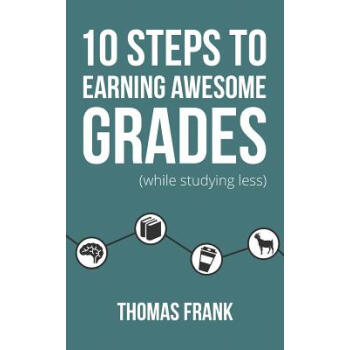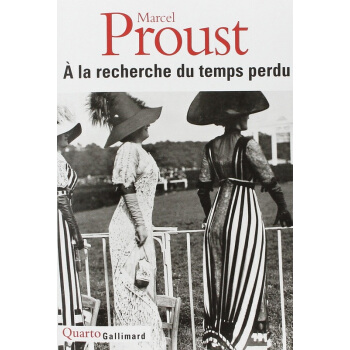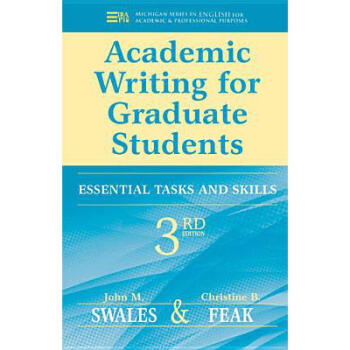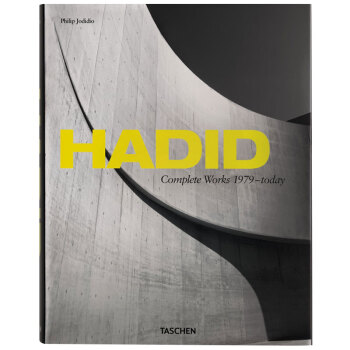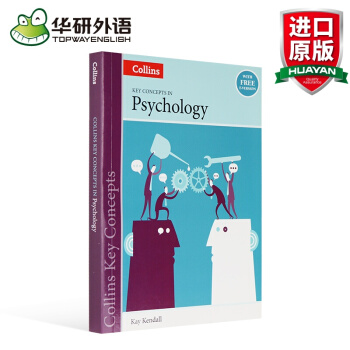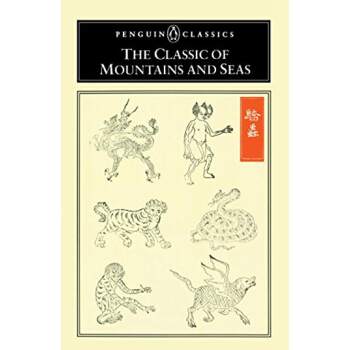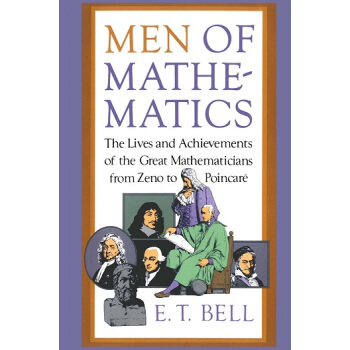

具体描述
Men of Mathematics
内容简介
Here is the classic, much-read introduction to the craft and history of mathematics by E.T. Bell, a leading figure in mathematics in America for half a century. Men of Mathematics accessibly explains the major mathematics, from the geometry of the Greeks through Newton's calculus and on to the laws of probability, symbolic logic, and the fourth dimension. In addition, the book goes beyond pure mathematics to present a series of engrossing biographies of the great mathematicians -- an extraordinary number of whom lived bizarre or unusual lives. Finally, Men of Mathematics is also a history of ideas, tracing the majestic development of mathematical thought from ancient times to the twentieth century. This enduring work's clear, often humorous way of dealing with complex ideas makes it an ideal book for the non-mathematician.
媒体推荐
Nature Professor E.T. Bell has written a fascinating book. The amount of biographical details and of mathematics that he has compressed into a volume of 600 pages is extraordinary...he carries the reader along; he whets the appetite. -- Review
作者简介
Eric Temple Bell was born in 1883 in Aberdeen, Scotland. His early education was obtained in England. Coming to the United States in 1902, he entered Stanford University and took his A.B. degree in 1904. In 1908 he was teaching fellow at the University of Washington, where he took his A.M. degree in 1909. In 1911 he entered Columbia University, where he took his Ph.D. degree in 1912. He returned to the University of Washington as instructor in mathematics and became full professor in 1921. During the summers of 1924-28 he taught at the University of Chicago, and in 1926 (first half) at Harvard University, when he was appointed Professor of Mathematics at the California Institute of Technology.
Dr. Bell was a former President of the Mathematical Association of America, a former Vice President of the American Mathematical Society and of the American Association for the Advancement of Science. He was on the editorial staffs of the Transactions of the American Mathematical Society, the American Journal of Mathematics, and the Journal of the Philosophy of Science. He belonged to The American Mathematical Society, the Mathematical Association of America, the Circolo Matematico di Palermo, the Calcutta Mathematical Society, Sigma Xi, and Phi Beta Kappa, and was a member of the National Academy of Sciences of the United States. He won the Bôcher Prize of the American Mathematical Society for his research work. His twelve published books include The Purple Sapphire (1924), Algebraic Arithmetic (1927), Debunking Science, and Queen of the Sciences (1931), Numerology (1933), and The Search for Truth (1934).
Dr. Bell died in December 1960, just before the publication of his latest book, The Last Problem.
目录
Contents
1. INTRODUCTION
For the reader's comfort. The beginning of modern mathematics. Are mathematicians human? Witless parodies. Illimitable scope of mathematical evolution. Pioneers and scouts. A clue through the maze. Continuity and discreteness. Remarkable rarity of common sense. Vivid mathematics or vague mysticism? Four great ages of mathematics. Our own the Golden Age.
2. MODERN MINDS IN ANCIENT BODIES
Zeno (fifth century B.C.), Eudoxus (408-355 B.C.), Archimedes (287?-212 B.C.)
Modern ancients and ancient moderns. Pythagoras, great mystic, greater mathematician. Proof or intuition? The taproot of modern analysis. A bumpkin upsets the philosophers. Zeno's unresolved riddles. Plato's needy young friend. Inexhaustible exhaustion. The useful conics. Archimedes, aristocrat, greatest scientist of antiquity. Legends of his life and personality. His discoveries and claim to modernity. A sturdy Roman. Defeat of Archimedes and triumph of Rome.
3. GENTLEMAN, SOLDIER, AND MATHEMATICIAN
Descartes (1596-1650)
The good old days. A child philosopher but no prig. Inestimable advantages of lying in bed. Invigorating doubts. Peace in war. Converted by a nightmare. Revelation of analytic geometry. More butchering. Circuses, professional jealousy, swashbuckling, accommodating lady friends. Distaste for hell-fire and respect for the Church. Saved by a brace of cardinals. A Pope brains himself. Twenty years a recluse. The Method. Betrayed by fame. Doting Elisabeth. What Descartes really thought of her. Conceited Christine. What she did to Descartes. Creative simplicity of Ms geometry.
4. THE PRINCE OF AMATEURS
Fermat (1601-1665)
Greatest mathematician of the seventeenth century. Fermat's busy, practical life. Mathematics his hobby. His flick to the calculus. His profound physical principle. Analytic geometry again. Arithmetica and logistica. Fermat's supremacy in arithmetic. An unsolved problem on primes. Why are some theorems "important"? An intelligence test. "Infinite descent." Fermat's unanswered challenge to posterity.
5. "GREATNESS AND MISERY OF MAN"
Pascal (1625-1662)
An infant prodigy buries his talent. At seventeen a great geometer. Pascal's wonderful theorem. Vile health and religious inebriety. The first calculating Frankenstein. Pascal's brilliance in physics. Holy sister Jacqueline, soul-saver. Wine and women? "Get thee to a nunnery.!" Converted on a spree. Literature prostituted to bigotry. The Helen of Geometry. A celestial toothache. What the post-mortem revealed. A gambler makes mathematical history. Scope of the theory of probability. Pascal creates the theory with Fermat. Folly of betting against God or the Devil.
6. ON THE SEASHORE
Newton (1642-1727)
Newton's estimate of himself. An uncertified youthful genius. Chaos of his times. On the shoulders of giants. His one attachment. Cambridge days. Young Newton masters futility of suffering fools gladly. The Great Plague a greater blessing. Immortal at twenty four (or less). The calculus. Newton unsurpassed in pure mathematics, supreme in natural philosophy. Gnats, hornets, and exasperation. The Principia. Samuel Pepys and other fussers. The flattest anticlimax in history. Controversy, theology, chronology, alchemy, public office, death.
7. MASTER OF ALL TRADES
Leibniz (1646-1716)
Two superb contributions. A politician's offspring. Genius at fifteen. Seduced by the law. The "universal characteristic." Symbolic reasoning. Sold out to ambition. A master diplomat. Diplomacy being what it is, the diplomatic exploits of the master are left to the historians. Fox into historian, statesman into mathematician. Applied ethics. Existence of God. Optimism. Forty years of futility. Discarded like a dirty rag.
8. NATURE OR NURTURE?
The Bernoullis (seventeenth-and eighteenth centuries)
Eight mathematicians in three generations. Clinical evidence for heredity. The calculus of variations.
9. ANALYSIS INCARNATE
Euler (1707-1783)
The most prolific mathematician in history. Snatched from theology. Rulers foot the bills. Practicality of the unpractical. Celestial mechanics and naval warfare. A mathematician by chance and foreordination. Trapped in St. Petersburg. The virtues of silence. Half blind in his morning. Flight to liberal Prussia. Generosity and boorishness of Frederick the Great. Return to hospitable Russia. Generosity and graciousness of Catherine the Great. Total blindness at noon. Master and inspirer of masters for a century.
10. A LOFTY PYRAMID
Lagrange (1736-1813)
Greatest and most modest mathematician of the eighteenth century. Financial ruin his opportunity. Conceives his masterpiece at nineteen. Magnanimity of Euler. Turin, to Paris, to Berlin: a grateful bastard aids a genius. Conquests in celestial mechanics. Frederick the Great condescends. Absent-minded marriage. Work as a vice. A classic in arithmetic. The Mécanique analytique a living masterpiece. A landmark in the theory of equations. Welcomed in Paris by Marie Antoinette. Nervous exhaustion, melancholia, and universal disgust in middle life. Reawakened by the French Revolution and a young girl. What Lagrange thought of the Revolution. The metric system. What the revolutionists thought of Lagrange. How a philosopher dies.
11. FROM PEASANT TO SNOB
Laplace (1749-1827)
Humble as Lincoln, proud as Lucifer. A chilly reception and a warm welcome. Laplace grandiosely attacks the solar system. The Mécanique céleste. His estimate of himself. What others have thought of him. The "potential" fundamental in physics. Laplace in the French Revolution. Intimacy with Napoleon. Laplace's political realism superior to Napoleon's.
12. FRIENDS OF AN EMPEROR
Monge (1746-1818), Fourier (1768-1830)
A knife grinder's son and a tailor's boy help Napoleon to upset the aristocrats' applecart. Comic opera in Egypt. Monge's descriptive geometry and the Machine Age. Fourier's analysis and modern physics. Imbecility of trusting in princes or proletarians. Boring to death and bored to death.
13. THE DAY OF GLORY
Poncelet (1788-1867)
Resurrected from a Napoleonic shambles. The path of glory leads to jail. Wintering in Russia in 1812. What genius does in prison. Two years of geometry in hell. The rewards of genius: stupidities of routine. Poncelet's projective geometry. Principles of continuity and duality.
14. THE PRINCE OF MATHEMATICIANS
Gauss (1777-1855)
Gauss the mathematical peer of Archimedes and Newton. Humble origin. Paternal brutality. Unequalled intellectual precocity. His chance, at ten. By twelve he dreams revolutionary discoveries, by eighteen achieves them. The Disquisitiones Arithmeticae. Other epochal works summarized. The Ceres disaster. Napoleon, indirectly robbing Gauss, takes second best. Fundamental advances in all branches of mathematics due to Gauss too numerous for citation: see the account given. A sage of sages. Unwelcome death.
15. MATHEMATICS AND WINDMILLS
Cauchy (1789-1857)
Change in nature of mathematics with nineteenth century. Childhood in the French Revolution. Cauchy's early miseducation. Lagrange's prophecy. The young Christian engineer. Prophetic acuteness of Malus. The theory of groups. In the front rank at twenty seven. One of Fermat's enigmas solved. The pious hippopotamus. Butted by Charles the Goat. Memoirs on astronomy and mathematical physics. Sweetness and obstinacy invincible. The French Government makes a fool of itself. Cauchy's place in mathematics. Drawbacks of an irreproachable character.
16. THE COPERNICUS OF GEOMETRY
Lobatchewsky (1793-1856)
The widow's mite. Kazan. Appointed professor and spy. Universal ability. Lobatchewsky as an administrator. Reason and incense combat the cholera. Russian gratitude. Humiliated in his prime. Blind as Milton, Lobatchewsky dictates his masterpiece. His advance beyond Euclid. Non-Euclidean geometry. A Copernicus of the intellect.
基本信息
出版社: Touchstone; Reissue (1986年10月15日)
丛书名: Touchstone Book
平装: 608页
语种: 英语
ISBN: 0671628186
条形码: 9780671628185
商品尺寸: 13.5 x 4.1 x 21 cm
商品重量: 499 g
ASIN: 0671628186
用户评价
这本《数学精英:改变世界的数学巨匠们》的英文原版,着实是一部引人入胜的传记合集。我拿到这本书时,首先被其厚重的质感和精心设计的封面所吸引,它散发着一种经典学术著作的韵味。阅读的体验非常流畅,作者的叙述功力深厚,他不仅仅是在罗列数学家的生平事迹和他们的主要成就,更深入地挖掘了这些天才的内心世界、他们的挣扎、他们的激情,以及他们是如何在那个特定的时代背景下,一步步构建起现代数学的宏伟殿堂。特别是对早期数学家,比如那些古希腊的哲人,他们的思想是如何萌芽、如何在那个缺乏现代工具的环境下进行严谨的逻辑推演,描述得栩栩如生。我印象最深的是其中对笛卡尔和牛顿之间那段充满火药味又相互成就的描述,那种天才之间的碰撞与竞争,读来令人热血沸腾。它让我意识到,数学的发展从来不是一条平坦的直线,而是充满了人性的复杂性与历史的偶然性。这本书成功地将枯燥的数学概念,转化成了有血有肉的故事,即便是对数学不太“感冒”的读者,也会被这些伟大灵魂所散发出的光芒所感染。它不仅仅是写给数学专业人士的,更是一部关于人类智慧如何突破自身局限的史诗。
评分说实话,我原本以为这会是一本读起来会有些吃力的书,毕竟涉及的人物跨度很大,而且很多数学成果的背景知识需要一定的储备。但这本书的处理方式非常巧妙,作者似乎有一种魔力,能将那些晦涩难懂的数学概念,用一种近乎文学化的语言进行解读,让门外汉也能窥见其精妙之处。我尤其欣赏作者在处理“人”与“学问”之间的平衡。比如,他没有回避那些著名数学家性格上的缺陷——他们的傲慢、偏执,甚至是道德上的瑕疵。正是这些不完美,使得这些站在人类智力巅峰的人物显得更加真实可触。阅读过程中,我多次停下来,去查阅一些相关的历史背景资料,这反而成了一种探索的乐趣,而不是负担。这本书提供了一个绝佳的切入点,让我得以一窥数学史的壮阔图景。它不是一本教科书,更像是一部引人入胜的“群像剧”,每一个数学家都是一个立体而鲜活的角色,他们的贡献如同一个个里程碑,共同铺就了我们今天的科学之路。我甚至觉得,它比许多专门的历史著作还要精彩,因为它聚焦于那些驱动历史前进的“人”的力量。
评分这本书的叙事节奏把握得极其精准,高潮迭起,张弛有度。从早期的几何学奠基者到微积分的诞生,再到近现代抽象代数和集合论的兴起,作者总能在关键的转折点设置引人深思的论断。我特别喜欢作者对那些“跨界”思考者的描述,比如那些同时在哲学、物理和数学领域都有深厚造诣的天才。他们的思维方式显然与常人不同,那种不受既有学科壁垒限制的自由探索精神,是这本书给我最大的启发。我感觉自己不是在读一本关于过去的记录,而是在进行一场与历史上最伟大头脑的深度对话。作者在描述那些突破性发现时,常常会引用当时的信件、日记片段,这极大地增强了现场感和历史的真实感。这种细致入微的考证,让那些被时间尘封的思考过程重新鲜活了起来。对于那些渴望了解“灵光乍现”是如何发生的读者来说,这本书提供了宝贵的洞察。它证明了伟大的数学发现往往不是孤立的灵感,而是长期积累、激烈思辨和对世界深刻洞察的必然结果。
评分作为一名对知识有着永不满足的读者,我一直在寻找那种能够拓展思维边界的作品,而这本《数学精英》无疑达到了我的预期,甚至有所超越。它让我明白了,数学并非一门僵化的、只有公式和定理的学科,而是一门充满创造力、甚至带有浪漫主义色彩的艺术。作者的笔触细腻入微,尤其在描写那些“失之交臂”的发现和未竟的理论时,那种历史的遗憾感扑面而来。书中对那些被时代误解、或是在生前未能得到充分认可的数学家的着墨尤为动人,这让我对“历史的评价”多了一层反思。它不仅仅是颂扬成功者,更是对那些默默耕耘、或是在错误的时间出现了正确思想的人的致敬。这本书的价值在于,它提供了一种宏观的历史视角,让读者能够理解数学知识体系是如何在竞争、合作与传承中不断自我完善的。读完之后,我感觉自己对“严谨性”和“想象力”在科学中的地位有了全新的认识,这两者并非对立,而是相辅相成的驱动力。
评分这本书的英文原版,在语言的驾驭上达到了极高的水准,即便是一些相对专业的术语,作者也能通过精准的上下文描述,让读者无需过度依赖专业背景知识就能领会其核心思想。我被作者强大的整合能力所折服,他成功地将不同世纪、不同文化背景下的数学家们串联成一条清晰的、逻辑严密的叙事线索。这种跨越时空的对话,让人感觉数学史是一部连续的、未完待续的史诗。我尤其欣赏作者在介绍某些数学概念的起源时,那种追本溯源的严谨态度,他总是会回到最初提出问题的那一刻,去感受先驱者们面对未知时的那种敬畏与兴奋。这种叙述方式极大地提升了阅读的沉浸感。它不是一本快餐式的读物,更像是一坛需要慢慢品味的陈酿,每一次重读都会有新的体会。它不仅仅是关于数学家的故事,更是关于人类理性探索精神的赞歌,激励着每一个追求真理的灵魂去敢于质疑、勇于创造。
相关图书
本站所有内容均为互联网搜索引擎提供的公开搜索信息,本站不存储任何数据与内容,任何内容与数据均与本站无关,如有需要请联系相关搜索引擎包括但不限于百度,google,bing,sogou 等
© 2025 book.coffeedeals.club All Rights Reserved. 静流书站 版权所有


